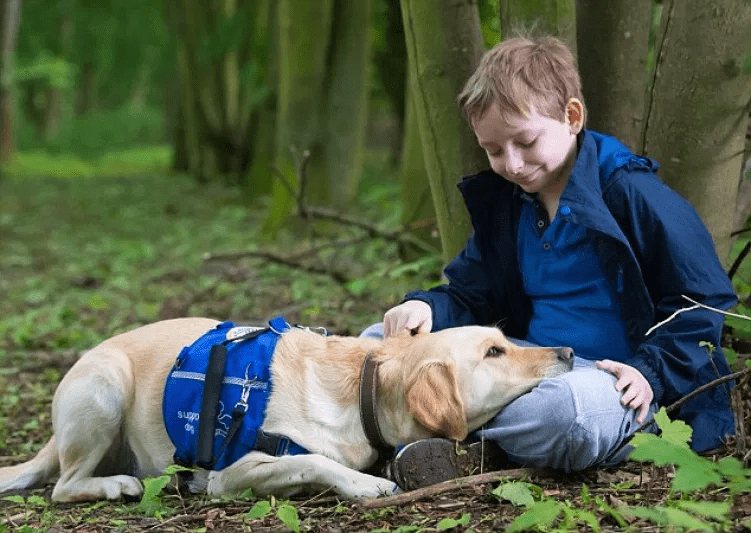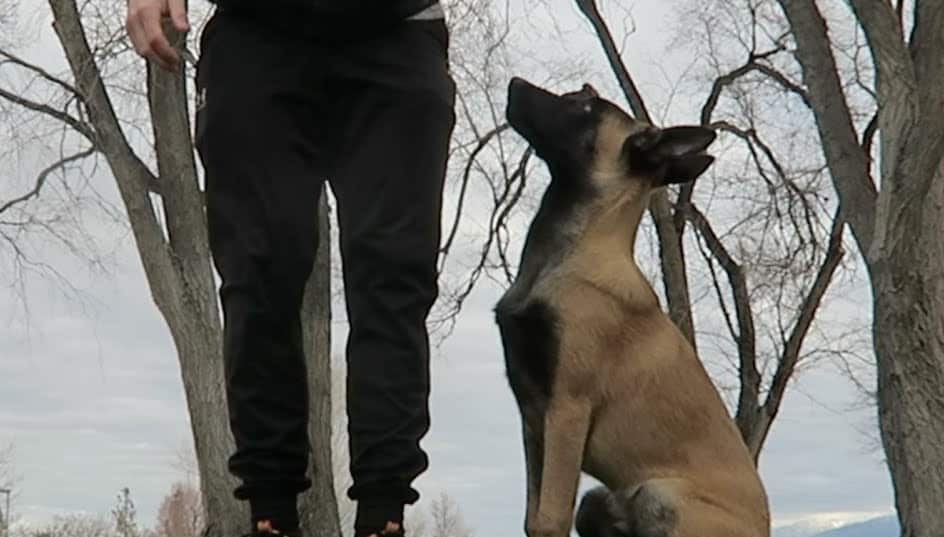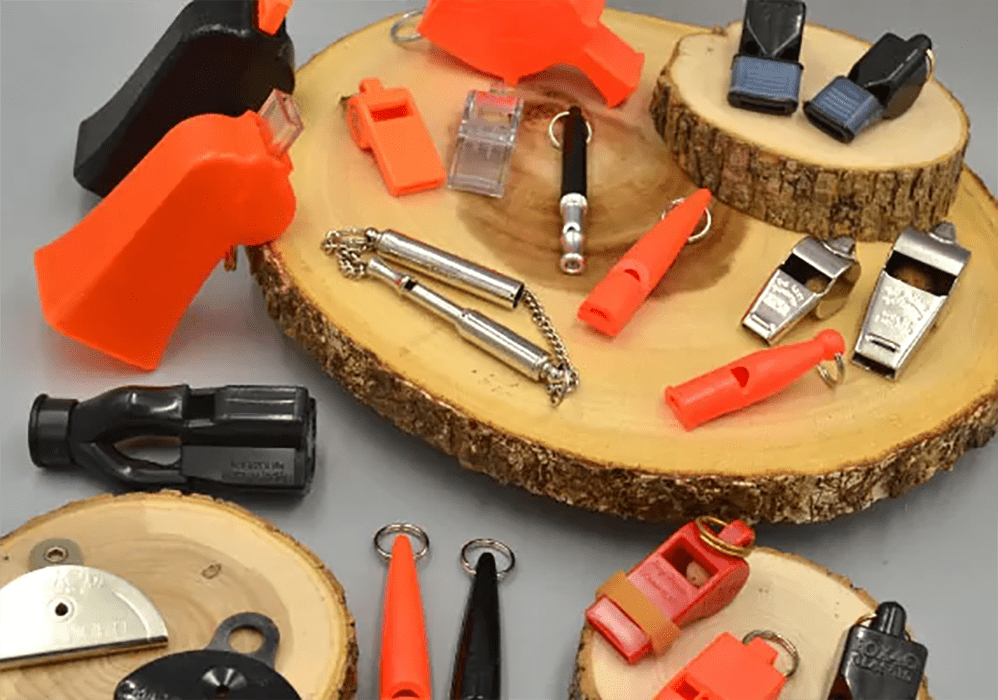When we picturise a happy family, kids and dogs are the two things that come to mind. In fact, the relationship between the two is so close that we take their names in the same breath. But many people do not know that for children with autism, dogs can prove to be a lot more than just best friends.
They can be initiators of conversations, comforters, therapists, and stabilizers of mood. Besides that, they can help in improving your child’s attention span and social skills.
Relationship between Autism and Dogs
According to the recent World Health Organisation reports, at least one out of 160 children all over the world has an “autistic spectrum disorder.” Unfortunately, there is no remedy for this developmental disorder. However, you can use certain tools and techniques to make your child’s life more comfortable.
One of those techniques includes bringing in a therapy dog for tending to your child’s emotional needs. According to various reports on autistic spectrum disorders, children with autism are prone to suffer from anxiety and depression. However, the intervention of a therapy dog can calm them down and help them in socializing.
There are a variety of dog breeds that can serve as the perfect autism therapy dog. Here is a list of some of the most prominent dog breeds that can help children with autistic spectrum disorder:
- Labrador Retriever
- Golden Retriever
- English Sheepdog
- Full-sized Poodle
- Boxer
- Newfoundland
- Great Dane
- Rottweiler
Here, we will specifically discuss how Labrador Retrievers can help children with autism.
How Labrador Retrievers tend to Autistic Children?
According to the trainers of autism assistance dogs, Labradors can help children with ASD in the following ways:
1) Searching and Keeping Safe
It is quite a known fact that children with autism have the tendency to saunter off. And once they do, there is no end to the worries of the parents. They keep stressing over where to search for their innocent child. However, petting a Labrador Retriever can help you in dealing with this problem.
As their name suggests, they are retrievers. Consequently, they have unbelievable tracking abilities. If they are trained to identify the unique scent of your child, your problem is solved. They will follow your child’s trails and track him or her for you if you are not with your child when he or she goes somewhere.
2) Behavior Intervention
According to some specialists, the sensory input in children with autism tends to be higher than what is prescribed. Such conditions of sensory overload trigger certain repetitive behaviors in them. For example, moving to and fro, repeating a specific expression, slamming their ears, and the like.
Besides that, some children are non-verbal. Consequently, they can’t even express when they experience an overload of sensory inputs. Such a condition can lead them to indulge in more self-destructive behaviors.
Due to their eager to please nature, Labradors employ various methods to interrupt your child’s recurring behaviors:
- Laying on your child to comfort him/her.
- Concentrate on one of their senses to calm them down.
- Distract them from irritating sensations and many more.
3) Road Safety
The overload of sensory information prevents children with autism to have a proper sense of danger or speed. Consequently, they have a tendency to bolt in a road with heavy traffic.
To avoid such situations, you need to get a special assistance dog jacket to keep your child connected to your Labrador in heavy traffic. Besides that, train your Lab to sit when it senses vehicle movements. As a result, your child will not be able to move when they experience a sensory overload.
4) A playmate
Children with autism find it difficult to have the acceptance of their peers. Consequently, they are unable to make friends and ultimately end up being a loner. However, Labradors, with their benevolent and trustworthy nature, can prove to be one of your child’s closest friends.
Being a retriever, Labradors love games that involve searching and tracking. Consequently, games like hide and seek will not only entertain your dog but also your child. And the best part is dogs do not bother about things like winning or losing.
5) Tethering
As mentioned earlier, children with autism suffer from sensory overload. And when they are in the midst of a crowded or chaotic area, such a condition can worsen. Consequently, your child may get into a muddled state and fail to identify dangerous circumstances.
However, you can avoid those situations by keeping your child tied up to your Labrador. All you need to do is buy a special kind of harness that comprises two leashes for your therapy dog. You have to give one of these leashes to your child, and the other will be held by you. If your child is quite independent, then let him/her grab the rope firmly. Otherwise, tie it in some part of their dress. Train your Labrador to not leave your child’s side. Consequently, the whole family will remain together, even in crowded places, and you don’t have to worry about losing your child.
6) Pacifying
If something overwhelms your child, Labradors have various techniques to soothe him or her. For example, you can train your Labrador to identify your child’s crying sound. As a result, whenever your child has an outburst, it will try to calm them down through kisses and cuddles.
At other times, you can just ask your Labrador to sit on your child’s lap. It will make him, or her feel reassured and help in getting some solace.
7) Breaking off behavioral loops
An overload of sensory inputs can drive your child into a circle of recurring behaviors. To deal with such repetitive behaviors, you can train your Labrador to identify them.
Sometimes, all you need to do is touch your child to take him/her out of such behavioral loops. Once your Assistance Labrador learns to identify such situations, it can gently bump or nudge or lick your child to break off such behavioral loops.
8) Improving social and communication skills
Some children find it challenging to interact and communicate with their peers. And if the child is autistic, then there’s no end to his or her miseries.
While some children suffer from autism-related fits in public. Others are considered outcasts when they prove to be different from the children of their age. However, such situations can be avoided by the introduction of a dog.
Children love dogs. Consequently, your Labrador can very well bridge the gap between your child and his or her peers. If they feel awkward or do not know how to communicate, your Lab will be a very interesting topic of discussion between your child and his/her peers.
Besides that, various studies have shown how petting a dog improve one’s social and communication skills. And when it comes to children with autism, their impact is almost miraculous.
9) Getting good sleep
The knowledge and explanations about the exact cause of autism are very limited. Research works are going on but to no avail. Consequently, a lot of questions regarding autism spectrum disorder remains unsolved.
One of such unanswered questions is, why are children with autism sleep-deprived?
While there is no specific answer to this question, there is definitely a tool that can help you deal with this issue. And that tool is your Labrador Retriever.
The connection and comfort that your child seeks during his or her sleep will be provided by your Lab. Consequently, he or she will be able to have a restful sleep for hours.
10) Becoming Responsible
Several studies on child psychology have described the positive effects of responsibilities on children. The fact that a living creature’s entire existence completely depends on your actions and care gives meaning to your life. Such a feeling is especially relevant for children with autism as they have to face rejection or marginalization from society.
Consequently, mundane works like brushing, cleaning, and feeding a dog become so much more than just a job. In fact, it is during these schedules that your child develops a close relationship with your dog.
Being such obedient and eager to please creatures, your Labrador will respond to your child with so much love and affection that they will become more cheerful, happy, and outgoing.
11) Exploring new opportunities
Children with autism find it challenging to cope with something beyond the routine nature of their lifestyle. However, the presence of a comforting friend like a dog motivates them to explore new things. As a result, they become more social, outgoing, and motivated. And if your dog is a Labrador Retriever, then your child will definitely try new things.
It is because Labradors are one of the most faithful, protective, and energetic dogs. With the protection, affection, and comfort of your Labrador, your child will reach new heights every day. Consequently, your child will become more motivated and confident, and your stress level will go down.
Selecting That One Suitable Labrador Retriever for a Child with Autism
Autism spectrum disorder comprises of a variety of conditions. Consequently, each child suffering from autism spectrum disorder will react differently. While some children tend to be very active and independent, others need external support and intervention to survive.
Therefore, if you wish to adopt a therapy dog for your child, you must contemplate your child’s exact needs. If your child is independent enough to look after a dog, choose a Lab keeping in your child in mind. Conversely, if your child needs support and Assistance to survive, choose your Labrador accordingly.
Conclusion
The cost of a good therapy dog will depend on the agency you approach and your child’s needs. If your child is independent enough and doesn’t need much support, you may have to pay less for your Labrador. On the other hand, if your child is gravely limited by autism, your Lab’s cost will also skyrocket.
Make sure to approach a sensitive Assistance Dog Agency to properly take all your needs into account. A good agency will ask you many questions to understand exactly what kind of therapy dog you need. If it doesn’t, you must opt for a different agency for your child’s benefit.
References
Table of Contents



